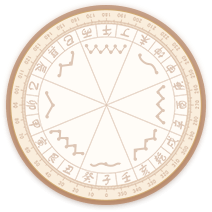新概念英语第二册第26课:The best art critics
时间:由 微梦雨 分享
微梦雨 分享
推荐文章
新概念英语第二册第26课:The best art critics
Lesson 26 The best art critics最佳艺术评论家
First listen and then answer the question.听录音,然后回答以下问题。
Who is the student's best critic?
I am an art student and I paint a lot of pictures.
我是个学艺术的学生,画了很多画
Many people pretend that they understand modern art. They always tell you what a picture is 'about'.
有很多人装成很懂现代艺术的样子,总是告诉你一幅画的“意思”是什么
Of course, many pictures are not 'about' anything. They are just pretty patterns.
当然,有很多画是什么“意思”也没有的。它们就是些好看的图案
We like them in the same way that we like pretty curtain material.
我们喜爱它们就像我们喜欢漂亮的窗帘布一样
I think that young children often appreciate modern pictures better than anyone else. They notice more.
我觉得小孩子们往往比任何人都更能欣赏现代绘画,他们观察到的东西更多
My sister is only seven, but she always tells me whether my pictures are good or not. She came into my room yesterday.
我的妹妹只有7岁,但她总能说出我的画是好还是坏。昨天她到我房里来了
'What are you doing?' she asked.
"你在干什么"她问道
'I'm hanging this picture on the wall,' I answered. 'It's a new one. Do you like it?'
"我正在把这幅图贴墙上"我回答道."这是一张新的,你喜欢吗?"
She looked at it critically for a moment. 'It's all right,' she said, 'but isn't it upside down?'
她严谨的看了一会"还可以"她说,"但是不是颠倒了"
I looked at it again. She was right! It was!
我再看了看,她说的没错,确实颠倒了!
New words and Expressions生词和短语
art
n. 艺术
critic
n. 评论家
paint
v. 画
pretend
v. 假装
pattern
n. 图案
curtain
n. 窗帘,幕布
material
n. 材料
appreciate
v. 鉴赏
notice
v. 注意到
whether
conj. 是否
hang
v. 悬挂,吊
critically
adv. 批评地
upside down
上下颠倒地
Notes on the text课文注释
1 art student,学美术的学生。
2 They always tell you what a picture is ‘about'.他们总是告诉你一张画的“意思”是什么。很明显,作者认为那些自以为懂得现代艺术的人的评论根本不着边际。因此,把about(“对画的分析”)这个词放在引号里,以示一种讽刺的口吻。
3 It's a new one.这是一幅新画。句中的one用来代替前一句中的名词picture,以免重复。
Lesson 26 自学导读First things first
课文详注 Further notes on the text1.They always tell you what a picture is‘about’.(他们)总是告诉你一张画的“意思”是什么。
This is a book about Australia.
这是一本关于澳大利亚的书。
They are talking about modern art.
他们在谈论现代艺术。
课文中这句话可以直译为:他们总是告诉你某一幅画是“关于”什么的,也就是一幅画的“意思”是什么。about放在引号里,一是指这些人谈论画的时候经常用到这个词,二是表示一种讽刺,因为有些画没有任何“意思”。
2.They are just pretty patterns.它们就是些好看的图案。
just在此处指“只是”、“仅仅(是)”,而不是指“刚才”、“正好”、“正是:
It was just a wrong number.
这只是一个错误的号码。(即只不过是拨错了号码)
It's just six o'clock.
正好6点。
I've just heard the news.
我刚刚听到这个消息。
3.We like them in the same way that we like pretty curtain material. 我们喜爱它们就像我们喜爱漂亮的窗帘布一样。
in the same way that/as是个连接短语,用于表示比较,可译为“像/和……一样”:
She walks in the same way that/as her sister did.
她的走路姿势和她姐姐以前走路的姿势一模一样。
4.I think that young children often appreciate modern pictures better than anyone else. 我觉得小孩子们往往比任何人都更能欣赏现代绘画。
else经常与不定代词连用(如everyone else,someone else,anything else等),表示“另外/加”、“其它/他的”或“不同的”:
Can you find anyone else?
你还可以找到其他人吗?
I can find nothing else here except an old dictionary.
除了一本旧字典,我在这儿再也找不到别的东西了。
课文中的这句话表示小孩子们比其他任何人都更能欣赏现代绘画。
5.…she always tells me whether my pictures are good or not.
……她总能说出我的画是好还是坏。
连接词 whether…or not可以表示选择:
I don't know whether you are interested (in it) or not.
我不知道你(对它)是否感兴趣。
You must help him, whether you like him or not.
不管你是否喜欢他,你(都)必须帮助他。
6.She looked at it critically for a moment. 她用挑剔的目光看了一会儿。
for a moment为固定短语,表示“片刻”、“一会儿”:
They looked at each other for a moment.
他们互相对视了一会儿。
7.It's all right. 还可以吧。
all right为固定短语,在这里表示“令人满意的”、“不错的”:
The performance of the Greenwood Boys at the Workers' Club was all right.
“绿林少年”演唱团在工人俱乐部的那场演出还不错。
all right还可以表达许多其他意思,如表示同意等。
语法 Grammar in use
一般现在时(cf.第2课语法)
(1)一般现在时可以用于表述现在的特征或状态:
I am an art student and I paint a lot of pictures.
我是个学美术的学生,画了很多画。(目前状态)
它也经常用于表述经常性或习惯性的动作,或带有普遍性的情况,频度副词可有可无:
Many people pretend that they understand modern art.
有很多人装成很懂现代艺术的样子。(普遍情况,不带频度副词)
They always tell you what a picture is‘about’.
他们总是告诉你一张画的“意思”是什么。(经常性动作,带频度副词always)
一般现在时还用于表示普遍性真理:
Summer follows spring.
春去夏来。
(2)有些表示状态和感觉的动词通常用于一般现在时。这些动词
一般不用于进行 时:appear,appreciate,be,believe,notice,feel,find,forget,resemble,hear,know,like,look like,remember,see,think,understand等:
He's listening to that music! He must like it!
他正在听那音乐!他肯定喜欢它!
I can't understand this picture.
我看不懂这幅画。
Can you see any mistakes?
你能发现有什么错误吗?
I heard some voices.
我听到有些说话声。
词汇学习 Word study
1.notice
(1)vt.注意到,察觉到(不用于进行时):
You never notice what's going on around you.
你从来不注意身边发生的事。
Did you notice him leaving?
他离开的时候你发现了吗?
I've noticed that it is warmer here than in England.
我发现这里比英国暖和。
(2)n.注意,察觉:
The girl in red caught his notice.
那位穿红衣服的姑娘引起了他的注意。
(3)n.(书面的)通知,布告,海报:
I know there's a meeting, because someone put up a notice outside the Town Hall.
我知道有个集会,因为有人在市政厅外面贴了个通知。
2.hang vt. vi.
(1)(将……)悬挂,吊:
I'm hanging this picture on the wall.
我正在把这幅画挂到墙上去。
Will you please hang the coat?
请把衣服挂起来好吗?
A pretty curtain hangs over the window.
窗户上挂着一个漂亮的窗帘。
(2)垂下:
John was very tired. He sat in a chair and hung (down) his head.
约翰非常疲倦。他垂着头坐在椅子上。
(3)安装……使能转动/摆动:
Have you hung the door?
你把门装上了吗?
3.upside down
(1)上下颠倒:
When Percy Buttons stands on his head, everything appears upside down to him.
当珀西·巴顿斯头顶地倒立时,一切东西在他看来都是上下颠倒的。
You've hung the picture upside down.
你把画挂倒了。
(2)乱七八糟,混乱不堪:
My little boy always makes the room upside down.
我的小儿子总是把房间弄得乱七八糟。
These men have made the whole country upside down.
这些人把整个国家搞得一团糟。
Lesson 26 课后练习和答案Exercises and Answer






